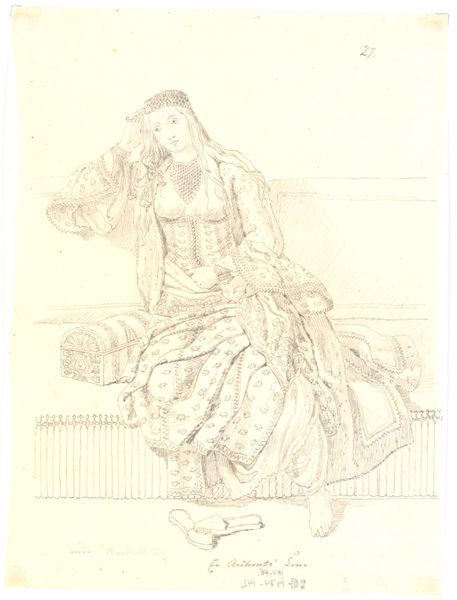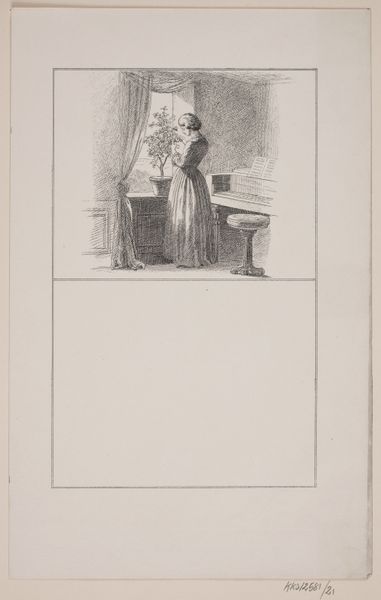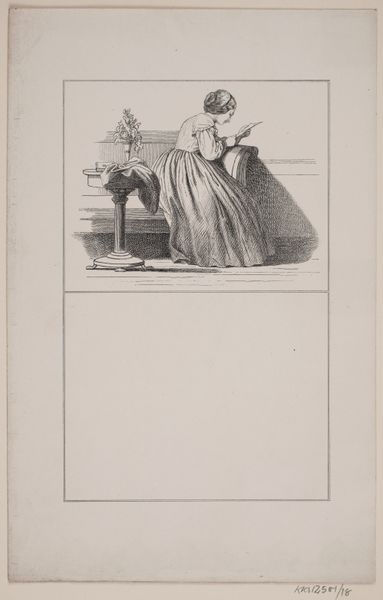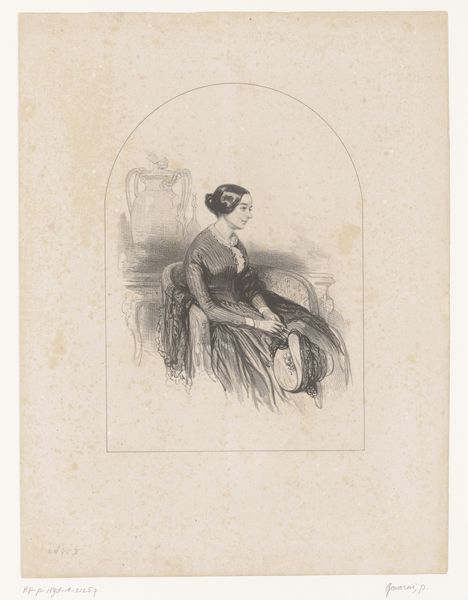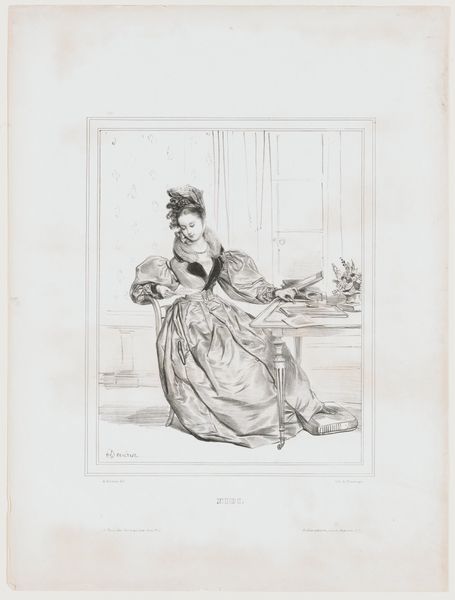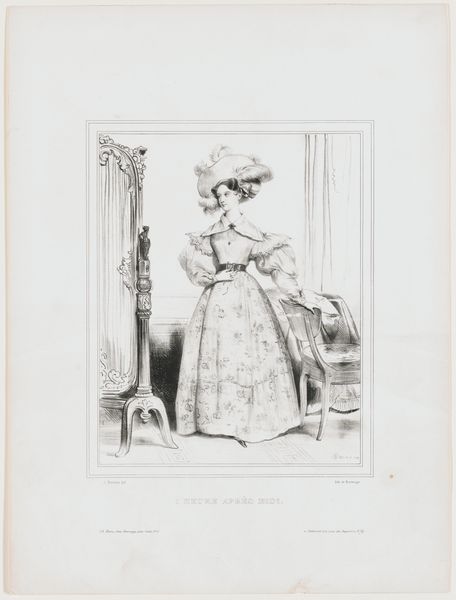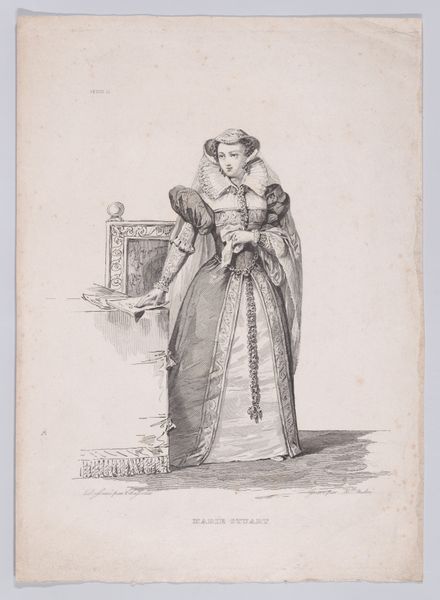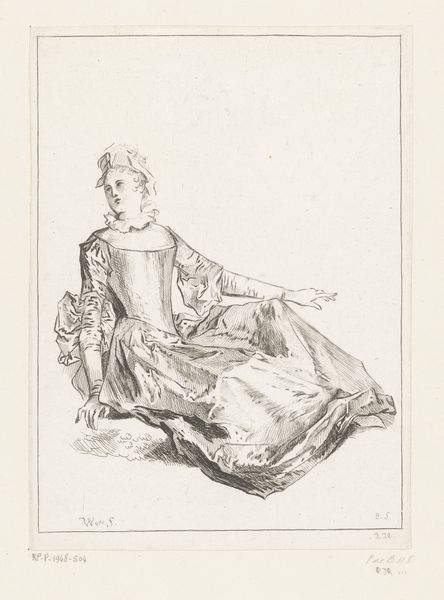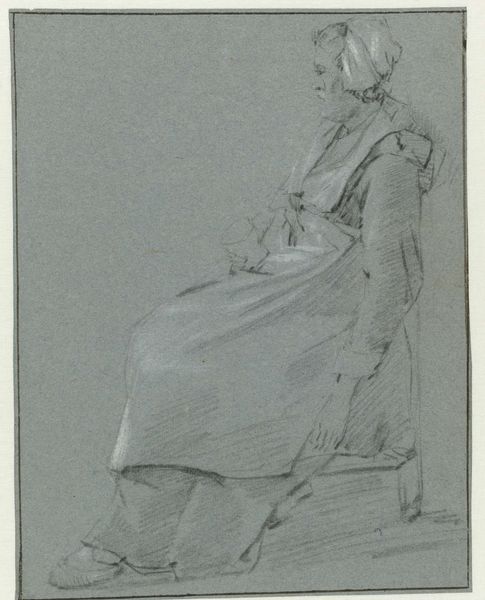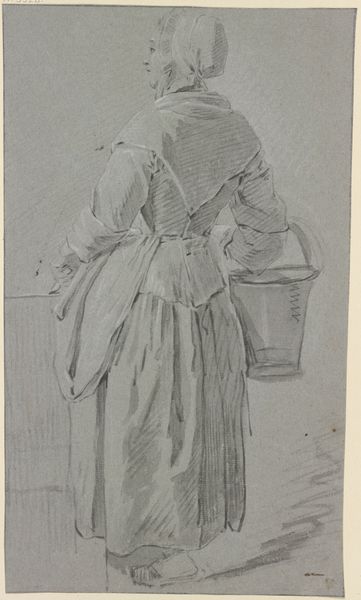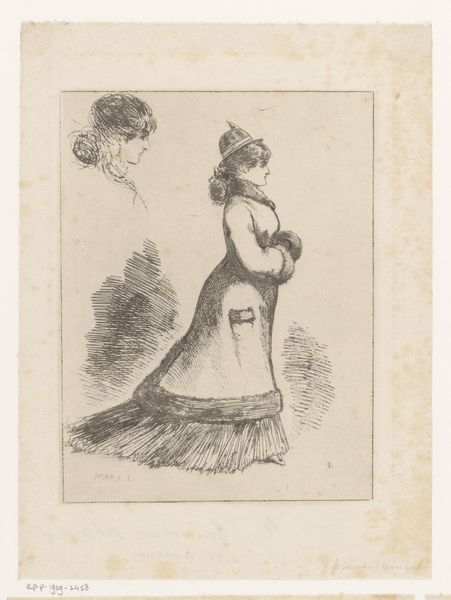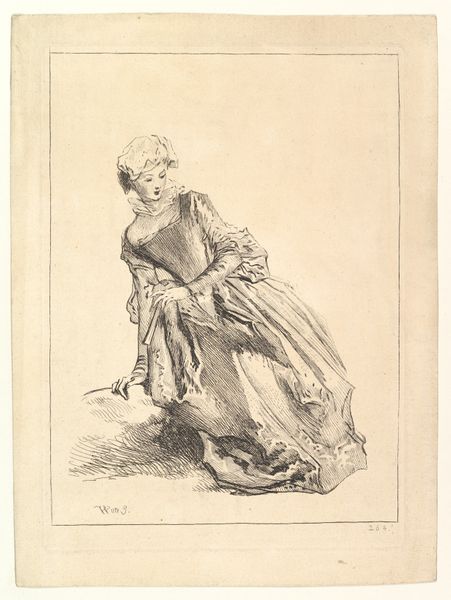
drawing, paper, graphite
#
portrait
#
drawing
#
paper
#
romanticism
#
19th century
#
graphite
#
genre-painting
Dimensions: height 217 mm, width 138 mm
Copyright: Rijks Museum: Open Domain
Editor: So, this is "Rosa von Tannenburg zittend met een boek," a drawing by Paul Gavarni from around 1841-1842. It’s graphite on paper. It feels very… melancholy to me. She seems burdened. What do you see in this piece? Curator: It's interesting to consider this drawing through the lens of its materiality and social context. We see a woman depicted in the style of Romanticism. However, what interests me most is not the emotional state presented, but how Gavarni, as a commercial artist, produced this image, for whom, and how it might have been consumed. This would likely have been reproduced, yes? Editor: Probably, given the period and his body of work, I’d assume it was meant for reproduction. It almost looks like an illustration. Curator: Exactly! We must think about the production of this piece – the paper, the graphite, where these materials came from, and the labor involved in their extraction and manufacture. Further, who purchased and consumed these images? This speaks volumes about 19th-century print culture and its relationship to class and gender. Consider the garment; it may depict a reality and inspire consumption by others. Are there any clues within the image that suggest how this imagery would have been sold? Editor: Now that you mention it, it does look like it could be a fashion plate of sorts. Her dress is very detailed. Curator: Precisely. This leads to more exciting questions. How does Gavarni's artistic labor fit into the larger economic structures of the time? Does he challenge traditional boundaries between "high art" and craft by engaging with the means of production, materiality, and the mechanisms of consumption inherent in the fashion and illustration industries? Editor: That's a really different way of thinking about it than I usually do! Focusing on the materials and the way the piece was made, connects it to larger social trends and forces. I’ll definitely keep that in mind moving forward. Curator: Indeed! Shifting the focus from individual expression to the material conditions of production reveals new insights. The piece is no longer simply about ‘melancholy;’ it’s about how those feelings were commodified and consumed.
Comments
No comments
Be the first to comment and join the conversation on the ultimate creative platform.
